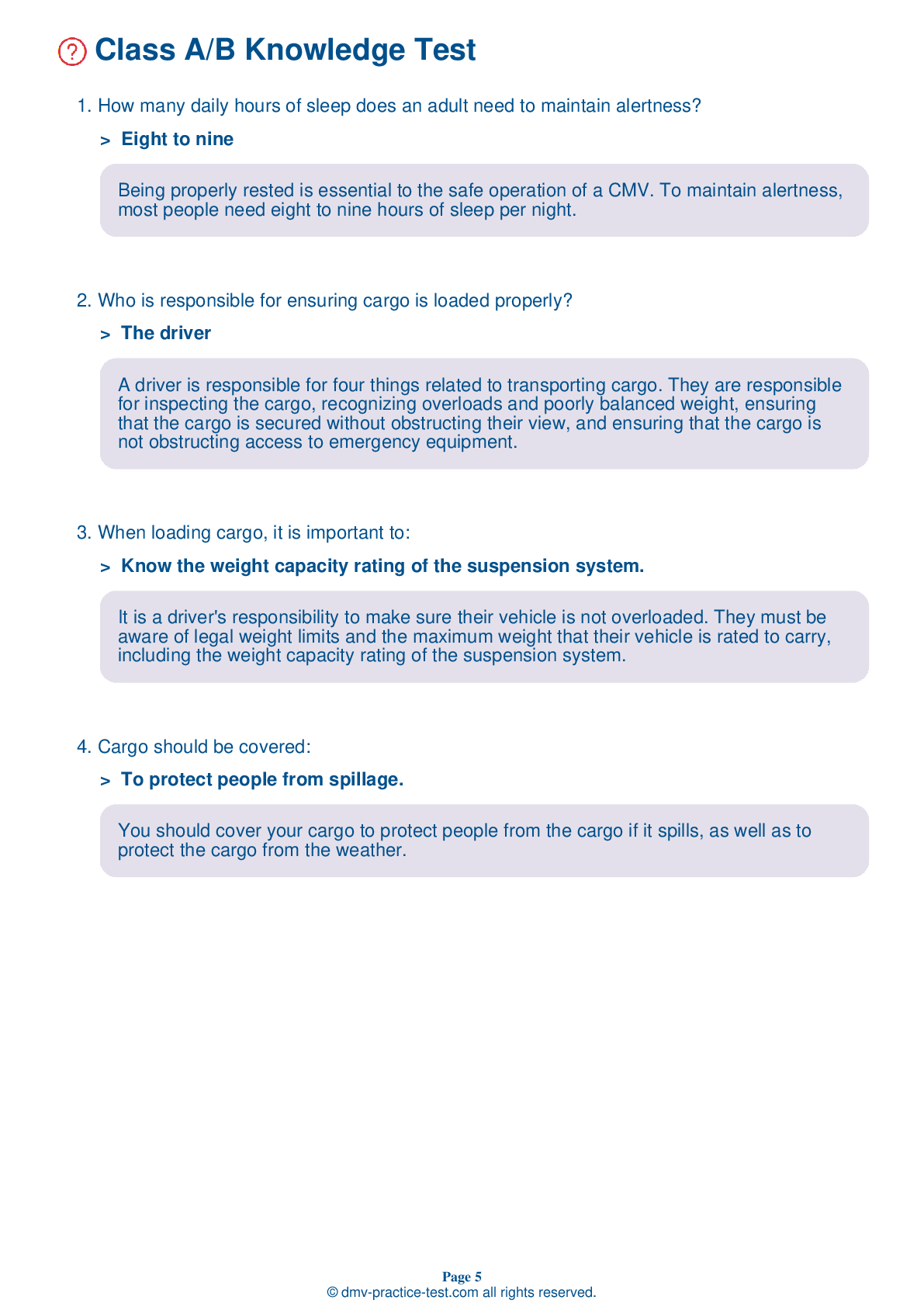Class B Driving Test | Nevada 2025 #1 Page 2 of 7
Train for FREE online with our Nevada class B license test. The official exam test consists of several obligatory parts, with all of them checking your knowledge of different blocks of road rules. If you need to obtain a NV CDL class B permit in 2025, practice as much as possible. Free sample tests published on our website will help you check and improve your knowledge and boost your grades. Please bear in mind that CDL class B requirements may vary from state to state.
8 . When driving, it is important that you:
When driving, you should continually scan the road for possible hazards. Form plans about what you will do if the hazards develop into emergencies.
9 . When traveling down a steep downgrade:
On a downgrade, the braking effect of the engine should be your primary method of controlling speed. Shift down to a lower gear before starting down the hill and save the brakes for additional slowing or stopping that may be required by road or traffic conditions.
10 . Mirrors should be used:
When driving, you should frequently check the mirrors on both sides of your vehicle.
11 . When backing, it is best to:
If you must drive in reverse, you should back up slowly and use the mirrors on both sides of your vehicle. Use a helper to monitor your blind spots whenever possible. You and the helper should agree on a signal for "stop."
12 . During a static leakage test, the maximum leakage rate for a double combination vehicle is:
When performing a static leakage test on a double combination vehicle with air brakes, the leakage rate should be no more than 3 psi in one minute. If air leaks from the air brake system at a quicker rate, the vehicle should not be driven because something likely needs to be repaired.
13 . A slack adjuster should move no more than ____ from where it is attached to the push rod.
Before a trip, you should check each slack adjuster after parking, setting wheel chocks, and disengaging the parking brake. Pull the slack adjusters to make sure that they do not move more than about one inch from where the push rod is attached. If they move more than one inch, they may be out of adjustment and will need to be fixed.
14 . Trailers should:
Overloading a vehicle is dangerous. It can damage the vehicle and interfere with the driver's ability to control it.
See the exact questions that will be on the 2025 Nevada DMV exam.
99.2% of people who use the cheat sheet pass the FIRST TIME
Lillian MCcranie explains how our CDL study guide was helpful in passing the exam and recommends it to everyone.
Cameron tells us how he purchased the CDL exam, and found it to be a useful tool which helped him pass the exam and find a job.



